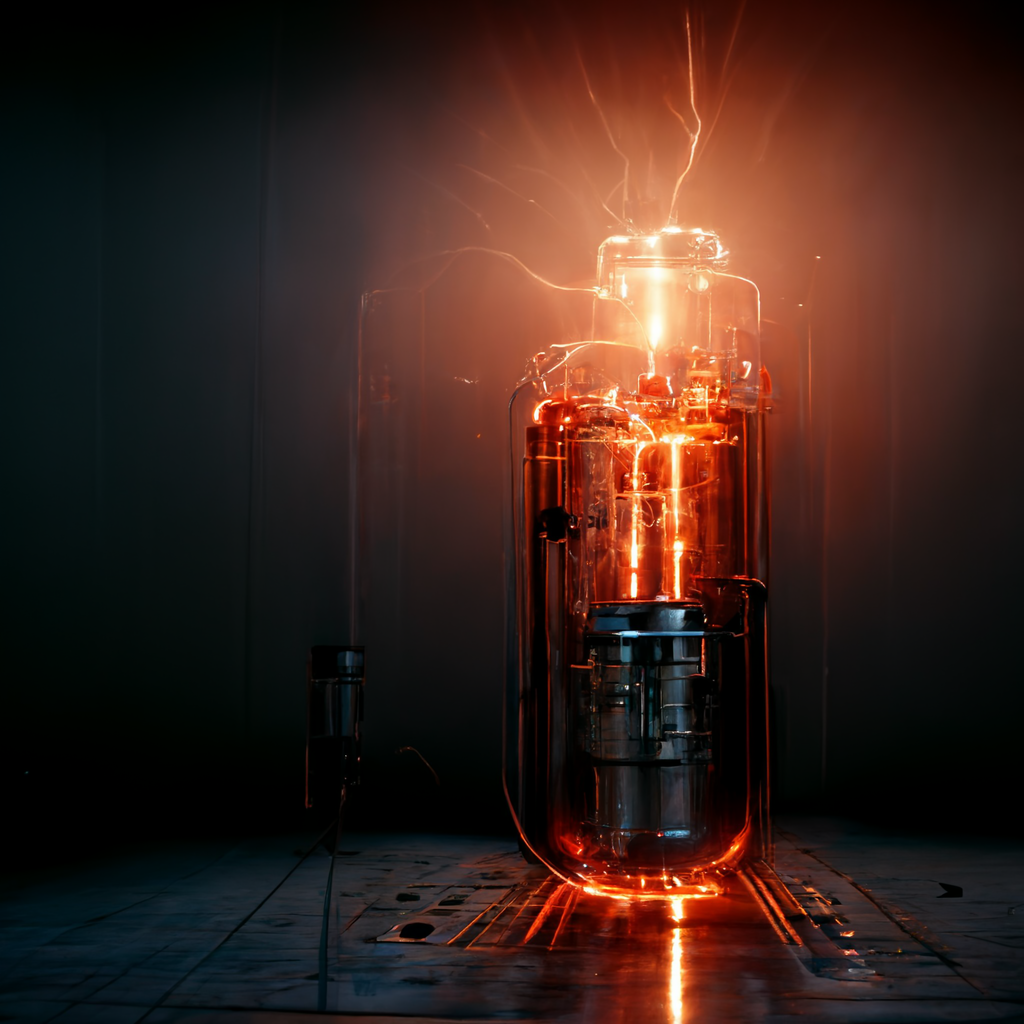The Z-pinch FuZE-Q fusion reactor from Zap Energy is a new word in the development of nuclear power

Before we cover the topic of this article, we will introduce you to the basic concepts related to nuclear power.
Glossary
A controlled nuclear fission reaction
In this reaction, heavy isotope nuclei of uranium or plutonium fission by bombarding them with neutrons into lighter isotopes, resulting in the release of heat. The heat is used to heat water and produce steam, and the steam in turn rotates the turbine, which generates electricity. One of the main drawbacks of this method of generating energy is the high radiation toxicity of the nuclear fuel waste.
Deuterium
An isotope of hydrogen, also called “heavy hydrogen” because its mass is 2 (a hydrogen atom has a mass of 1). Deuterium is extracted by various methods, including ion exchange between water and ammonia or hydrogen sulfide, rectification (separation of various mixtures into components due to countercurrent interaction between liquid and vapor), electrolysis, etc. Another isotope of hydrogen is tritium. Its mass is equal to three.
Fusion
A reaction that is the opposite of a controlled nuclear fission reaction, a process for generating heat. The essence of fusion is that when deuterium or tritium gas, which serve as nuclear fuel, is compressed and heated in a reactor, the gas is converted into plasma. When heated, the light deuterium nuclei gain high kinetic energy, their thermal motion is accelerated, and the nuclei begin to collide with each other. When the plasma is compressed, the atoms overcome the Coulomb barrier (which exists between all nuclei and prevents them from merging) and merge with each other, forming heavier helium nuclei. In the process of deuterium fusion, thermal energy is released.

Scientists predict a broad future for generating heat with the help of reactors based on thermonuclear fusion, due to a number of advantages of this approach. First and foremost are the planet’s practically inexhaustible reserves of water, which, once enriched with deuterium, can be used as nuclear fuel. In addition to the availability and affordability of deuterium compared to, for example, plutonium or uranium, it is also worth noting the significantly higher environmental safety of fusion waste, again relative to nuclear fission waste: for a hundred years it can be recycled without harming human life or the environment. The third advantage is that fusion is less dangerous than a nuclear fission reaction, due to the faster response time to possible failures, so the risk of an accident or breakdown of a fusion reactor is much lower.
FuZE-Q
Experimental reactor developed by Zap Energy that uses an electromagnetic field for plasma confinement, to which the Z-pinch effect is applied.
Isotope
A kind of atom of some substance having a different mass.
Plasma
An ionized gas containing free electrons and ions (atoms of a substance from which the electrons have been removed) that can be negatively or positively charged.
Tokamak
A type of experimental thermonuclear reactor of the toroidal type (which is why it is often called a “doughnut”) in which plasma is retained by coil-shaped magnets. Plasma confinement is necessary so that deuterium nuclei have time to fuse with each other and, as a result of fusion, release energy. Magnetic coils are quite large, complex and expensive, which is generally reflected in the cost of the reactor and the energy it generates. Just as in the FuZE-Q alternative reactor, the fusion of deuterium and/or tritium nuclei in the tokamak produces helium nuclei and fast neutrons. The latter are absorbed by the reactor vessel, so it can pose a certain radiation threat. However, the biggest problem with tokamaks is that despite the fact that the first models of these reactors were created back in the 1950s, scientists have not yet been able to achieve a result in which the power generated by the reactor exceeds the power required to heat and hold the plasma, i.e. to conduct a nuclear reaction.
A variety of tokamaks are stellarators. They are also equipped with magnetic coils that rotate a system of irregularly shaped circles through which the plasma circulates. The irregular circles help reduce the amount of current needed to contain the plasma.
Another type of fusion reactor, called an “inertial reactor,” is based on creating and holding plasma in a stable state by irradiating nuclear fuel (pellets or pellets) with laser beams.
Zap Energy
A company founded in 2017 at the University of Washington as one of the projects of the FuZE (Fusion Z-pinch Experiment) research group.

Z-pinch
In nuclear energy research, this term is commonly used to refer to a type of plasma confinement system which uses electric current to create a circular magnetic field which heats and compresses the plasma. (“Pinch” means “constriction”, “compression”, “pinch”; Z is the axis on a three-dimensional graph pointing inside the current channel).
Why is Zap Energy’s invention important?
In its FuZE-Q demonstration reactor, Zap Energy used an innovative plasma confinement method it called “shear flow stabilization. The electromagnetic field generated by electric current pulses envelops the plasma flow on all sides, giving it a stable shape and giving it a radial shift (Z-pinch), thus preventing the plasma from deforming, disintegrating inside and “spreading out” to the sides. In this case, as we noted above, the electromagnetic field not only compresses but also heats the plasma, creating the necessary conditions for the fusion reaction to proceed.
At the moment, Zap Energy has not yet been able to break even, but it already predicts that by 2026 it will be able to generate enough electricity in its reactors to exceed the cost of fusion power.






